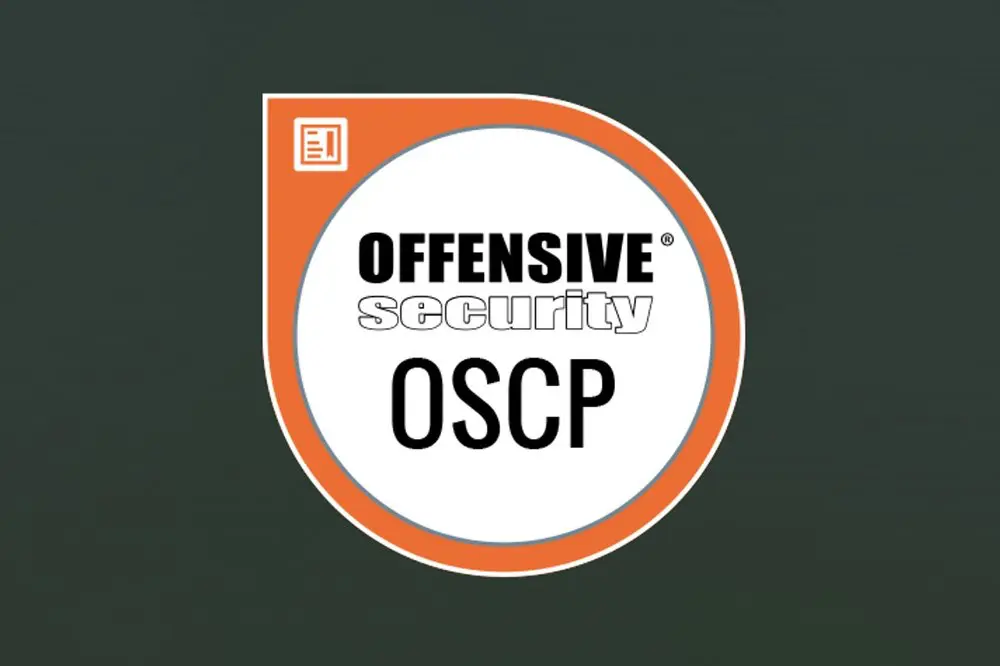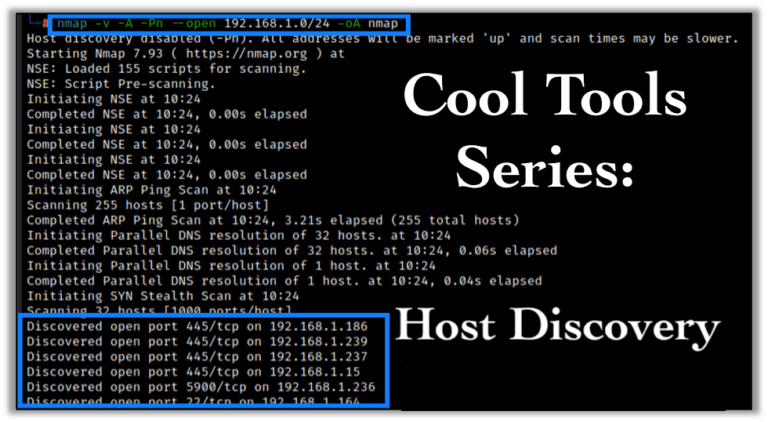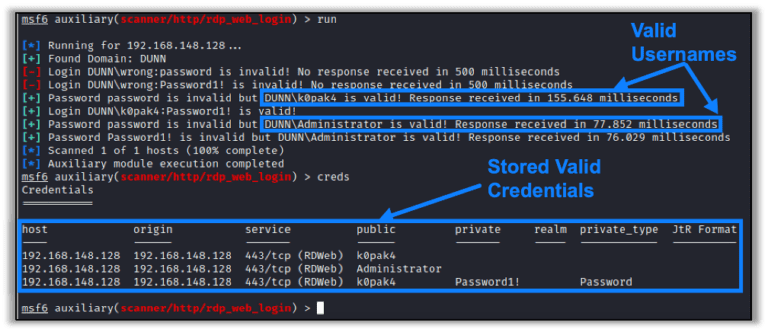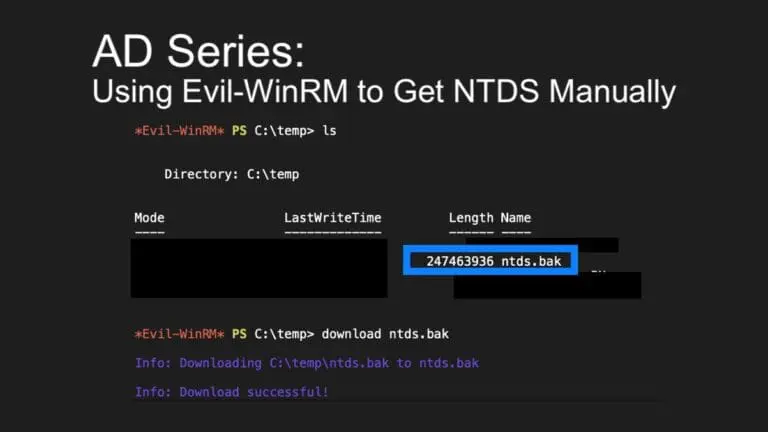So, You Want to Earn Your OSCP?
I’m Andrew Trexler, senior penetration tester at Raxis. As the Raxis team member to earn the Offensive Security Certified Professional (OSCP) designation most recently, I’m sharing my thoughts about the experience. My goals are to provide you with information I found helpful as well as to share some things I wish I had known in advance.
Why take the OSCP?
If you’re serious about being a penetration tester, the OSCP is, for all intents and purposes, the industry standard. As I considered pentesting as a career, I spoke with lots of people who were working in the field already. Consistently, they recommended getting the certificate, which requires taking the Penetration Testing with Kali Linux (PWK) course. I also watched a great YouTube video by John Hammond in which he recommended it.
In truth, the course is useful for any career in cybersecurity, not just pentesting. If you’re working on a blue team, for example, the experience of hacking into a network provides a lot of valuable insights for developing a cyber defense strategy.
Where to Start
As I mentioned, you start officially with the PWK course. Going through it is helpful, and you really do learn a lot. The course includes a manual along with a lab environment. It is self-paced, so you go through it on your own time and schedule the test when you’re ready to take it.
However, there are some things I recommend doing beforehand. If you are new to the pentesting/cybersecurity field I would start with some capture-the-flag (CTF) exercises like those found here. After getting comfortable with CTFs, you might find it helpful to move on to sites like Hack the Box or TryHackMe. Doing these first will help you hit the ground and get running a little faster in the lab environment.
How to Make the Most of Your Coursework
Take lots of notes. While going through the lab, you’ll do many different things – and you’ll do the same things multiple times. Keeping notes on how you got access to each machine during the lab work (yes, with copy/paste commands and explanations) will help during the test. Your notes can give you ideas and help you remember difficult syntax. Also, notes that act as cheat sheets with common commands are especially helpful. (I use Obsidian to take notes in Markdown.)
Further, I recommend spending as much time in the lab as possible. While there is a forum for users, it may sound like the people there are speaking in code. If you struggle, just keep working the problem and learning. If you do get stuck, ask questions in the forum. From my experience everyone is helpful, but they know it’s more important to guide you to an answer than give it to you. Those who answer usually do it in a way that makes you learn the solution on your own, and you’ll thank them for that when you are taking the OSCP exam.
About the Lab
The lab houses more than 70 different computers. Most of these computers contain vulnerable software that can be exploited – and some don’t. The idea is to exploit a vulnerable machine, grab any information it’s storing, and then use it to access a machine that does not have a vulnerability.
Among the vulnerabilities you’ll see in the lab are ones that are well-known and that have been around for years. EternalBlue is one example. Then, there are smaller applications that still have known vulnerabilities, but require a little searching to find the right exploit.
The real challenges are the custom applications that either can be used to gain access or have their own vulnerabilities that require custom exploitation, using anything from XSS to SQLi to LFI/RFI. There are also remote and local exploits to gain access and then escalate privileges.
See a term you don’t recognize? Visit our glossary.
To me, the most interesting part of the lab is the subnet structure. There are different subnets that require access to an initial computer, at which point you can pivot and pass traffic through that computer. This proxying traffic can be the only way to hit and exploit the other machines on the subnet.

How the Test Works
There are five different machines on the test. On each are text files that can be submitted to prove your access. Depending on the difficulty of the machine, these files are worth varying numbers of points. Of 100 available points, you’ll need 70 to pass the exam.
However, to get credit for those points, you have 24 hours to write a report that includes the steps you took to exploit the machine. These must be replicable by a technically competent reader and must contain either the link to the exploit code used or the exploit code if changes were made to it.
During the exam, you are not allowed to use automated exploit tools. Metasploit can only be used once during the test, whether it works or not. Other exploits must be created manually by inputting the correct data or scripts, which may require some trial and error.
What to do Before the Exam
It sounds counterintuitive, but I don’t recommend studying or practicing right up until test time. Instead, try to take the day before the exam to prepare for how you’re going to take it. The exam must be completed in 24 hours, but you can pick an early or late start time. If you’re an early riser, start early. If you like to sleep in, start later. The point is to make sure that you play to your own strengths.
Use your prep to do other helpful things as well. Maybe make sandwiches for the next day or set up the computer you are going to use to take the test. Figuring out things that you can do the day before can and will make things easier come test day.
What to do on Exam Day
The hardest part of the exam is the time management. The attacks to gain access are straightforward once you find them. However, you might have to change things up to get the exploit to work.
Be sure to watch out for rabbit holes. There aren’t many, but being able to recognize them and get out of them quickly is a critical skill. Part of what they are testing is how quickly you figure out when you’re on the wrong path . . . or if you just haven’t gone far enough down the right one.
Also keeping things fresh and not getting frustrated is key. That’s why it’s important to take your time, despite the deadline. I felt pressured by the 24-hour time limit, but it helped a lot to take a five-minute break about once each hour. Walking away from the computer and just re-setting a little bit can bring the burst of inspiration that helps you get to the next step.
Incidentally, time management is a skill that’s even more essential in your career as a pentester. There’s only a certain amount of time allotted for testing, so you can’t get sidetracked chasing dead ends.
Final Thoughts
Remember that this is a professional certification, and many people don’t pass it on their first try. Let that take some of the pressure off. If you don’t pass this time, you always have next time.
And, yes, it’s very hard. But that’s a good thing. If it were easy, everyone could do it and that would rob you of the satisfaction and respect that comes with earning your OSCP.






